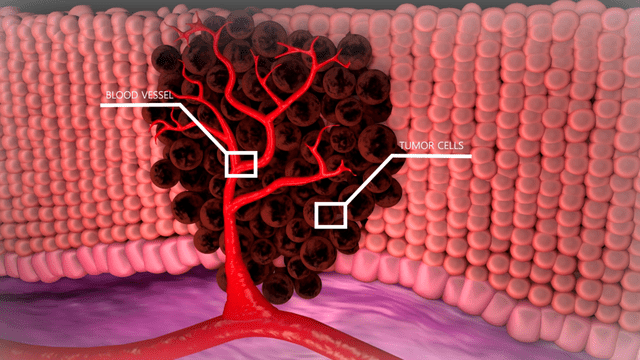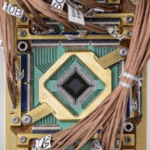Could Quantum Physics Help Detect Cancerous Tumors?

Current technology used to detect and track cancerous tumors is limited. MRI (Magnetic Resonance Imaging) is usually used to screen for different types of cancer, but it doesn’t always catch everything. According to one article, around 58% of breast cancer MRI interpretations may overlook at least one potential tumor. Though not all of the scans are looking for tumors, the ones that are still cause enough vagueness and misinterpretation that patients can become worried. To solve this issue, researchers at the Technical University of Munich (TUM) are working to improve MRI imaging by using a special quantum process called hyperpolarization.
What is Hyperpolarization?
On a quantum scale, many atoms and molecules have specific spins, meaning their nuclei or electrons may move in a specific way. Using a magnetic field, an MRI machine can pick up on the spins of these molecules in order to make an image. Scientists can control the direction of these spins via polarization, where a magnetic, or sometimes an electric field forces the atoms to spin a certain way. In hyperpolarization, atoms spin in an extreme direction, far beyond a normal amount. If all of the spins are aligned in one direction, the MRI can detect the atoms with an even stronger signal, allowing for more accuracy and better resolution.
Tracking Tumors
The process of actually aligning all the spins and getting a molecule into hyperpolarization can be difficult. To make the process easier, the researchers used a special magnetic state of hydrogen, called parahydrogen to try and create a stronger signal for the MRI machine. According to professor Franz Schilling of the Technical University of Munich: “parahydrogen is a special spin state of hydrogen and it is in a lower energy state than the other spin state of hydrogen which is orthohydrogen.” Because of its special spin state, parahydrogen is produced at very low temperatures using liquid nitrogen.
However, parahydrogen cannot be measured by an MRI machine due to its quantum dynamics. It can, though, cause the hyperpolarization of other molecules, boosting the sensitivity of the MRI scan. Using parahydrogen, the researchers were able to hyperpolarize pyruvate, a metabolic product that tumors produce. In tracking where pyruvate was in an MRI scan, the researchers could estimate the location of cancerous tumors. Combining parahydrogen and stimulation with radio waves, the researchers were able to hyperpolarize a carbon atom of pyruvate, seeing a stronger signal in the MRI scan.
A Technique for Cancerous Tumors
As the results suggested a more effective method for cancerous tumor screenings the researchers are hopeful that this method will be used in the future. “A clinical parahydrogen polarizer potentially offers a safe, robust, and widely applicable technique to enhance the signal of nuclear spin to allow metabolic imaging,” Dr. Schilling added. “Metabolic imaging promises assessment of early response to therapy in cancer and early detection of pre-malignant cancerous lesions.” With these results, a team of researchers is working to create a prototype of the hyperpolarizer, helping to pave the way for more effective screenings, which in turn may save more lives.
Kenna Hughes-Castleberry is a staff writer at Inside Quantum Technology and the Science Communicator at JILA (a partnership between the University of Colorado Boulder and NIST). Her writing beats include deep tech, the metaverse, and quantum technology.























